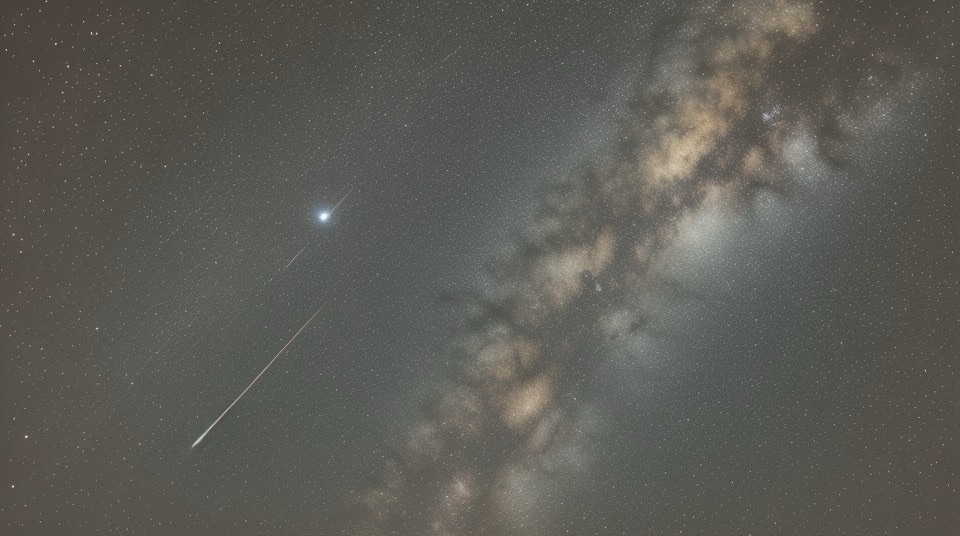Picture this: you’re standing in a cosmic delivery room, 1,300 light-years from Earth, watching the universe’s most profound miracle unfold. Not the birth of a star—that’s already happened. This is something rarer, more intimate. You’re witnessing the very first breath of worlds that don’t yet exist.

For the first time in astronomical history, scientists have captured the exact moment when a planetary system takes its first steps toward existence. The target of this cosmic obstetrics? HOPS-315, a baby star where astronomers have observed evidence for the earliest stages of planet formation—what researchers are calling “time zero” of planetary birth.
When Dust Dreams of Becoming Worlds
Located about 1,300 light-years away in the Orion constellation, HOPS-315 is what astronomers call a protostar—a stellar infant just a few hundred thousand years old. In cosmic terms, that makes it roughly equivalent to a human embryo. And just like expectant parents gathering around an ultrasound screen, astronomers used the combined power of the James Webb Space Telescope and the Atacama Large Millimeter/submillimeter Array (ALMA) to peer into this stellar womb.
What they found was extraordinary: solid mineral grains, the initial seeds of planet formation, emerging within a protoplanetary disk around the newborn star. Think of it as cosmic DNA—the fundamental building blocks from which entire worlds will eventually crystallize.
The discovery is like catching lightning in a bottle, or perhaps more accurately, catching stardust in the act of dreaming it could become a planet. These primordial rocks contain crystalline minerals that include silicon monoxide and can condense at the extremely high temperatures present in young planetary discs—temperatures so intense they make the core of our Sun seem chilly by comparison.
The Recipe for Reality
Here’s where the story gets personal. “We’re seeing a system that looks like what our Solar System looked like when it was just beginning to form,” explains study co-author Merel van ’t Hoff, a professor at Purdue University.

Imagine rewinding Earth’s origin story by 4.6 billion years. You’d witness the same cosmic choreography now unfolding around HOPS-315: swirling clouds of gas and dust gradually condensing into solid particles, like morning dew forming on a spider’s web. Over time, these newly condensed solids bind together, sowing the seeds for planet formation as they gain both size and mass.
The process resembles a cosmic snowball effect—but instead of snow, we’re talking about microscopic grains of rock and ice that will, over millions of years, bump into each other, stick together, and grow into pebbles, then boulders, then mountains, then moons, and finally, entire planets.
This isn’t just any old dust we’re observing. Scientists age-date these primordial rocks to determine when the clock started on our Solar System’s formation. It’s cosmic archaeology in reverse—watching the evidence of tomorrow’s civilizations form grain by grain.
The Goldilocks Zone of Creation
What makes HOPS-315 particularly fascinating is its timing. Most planetary systems we’ve studied are either too young (just swirling gas and dust with no solid formation) or too old (planets already formed and settled into their orbits). This system exists in the perfect sweet spot—minerals in the system around HOPS-315 are just starting to form, giving astronomers their first real-time glimpse into planetary genesis.
The observations required a technological tour de force. Webb’s infrared eyes peered through the dusty cocoon surrounding the young star, while ALMA’s millimeter-wave vision detected the telltale signatures of crystalline minerals forming in the disk. Together, they created a portrait of creation itself—a cosmic Polaroid of the moment when chaos begins organizing itself into order.
More Than Scientific Curiosity
This discovery resonates beyond academic circles because it touches something fundamentally human: our origin story. Every atom in your body was forged in stellar furnaces and planetary accretion disks just like the one surrounding HOPS-315. The calcium in your bones, the iron in your blood, the oxygen you breathe—all of it began as cosmic dust swirling around a young star billions of years ago.
This record-breaking newborn planetary system gives us a glimpse into the history of our own Solar System. We’re not just observing distant astronomy; we’re watching our cosmic ancestry unfold in real time. It’s like finding a baby photo of the universe itself—if baby photos could span millions of years and involve temperatures of thousands of degrees.
The implications stretch far beyond our immediate stellar neighborhood. If planet formation happens this predictably around sun-like stars, it suggests that solar systems—and potentially habitable worlds—might be far more common than we ever dared imagine. Every star could be a potential nursery for worlds, and every world could be a potential nursery for life.
The Next Chapter Writes Itself
As HOPS-315 continues its cosmic maturation over the next few million years, astronomers will have an unprecedented opportunity to watch a solar system grow up. They’ll witness the formation of the first planetesimals, observe how gas giants sweep up debris, and perhaps even detect the signatures of rocky planets settling into stable orbits.
But here’s the question that should keep you awake tonight: if we’re just now learning to recognize the birth cries of alien worlds, how many planetary systems might we have missed? How many Earths are taking their first breaths around distant stars, waiting for someone to notice their cosmic debut?
In the grand theater of the universe, we’ve always been the audience. But with discoveries like HOPS-315, we’re finally learning to recognize the opening night of entirely new performances—each one a potential stage for stories we can’t yet imagine.
OTHER INTERESTING: https://semair.site/earths-spin-accelerates-july-22-marks-second-shortest-day/

